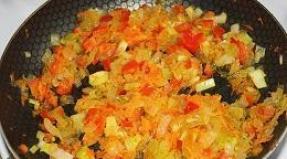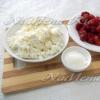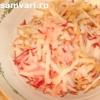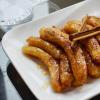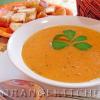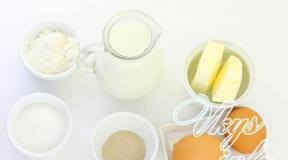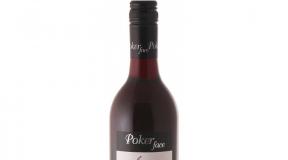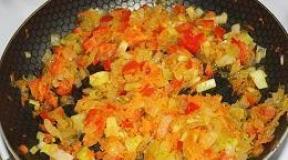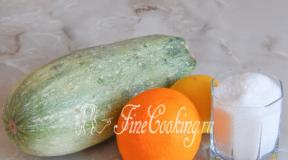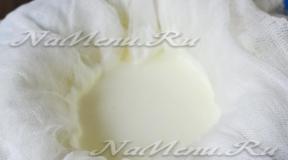Meringue custard for decorating the cake. "Wet meringue" for decorating a cake: recipe
Very often, to decorate cakes, experienced craftswomen use a cream with an interesting name - “Wet meringue”. It is called so for its very unusual and wonderful properties, which are worth talking about in more detail.
We classify and characterize
The “Wet Meringue” cream got its name among the people, because it is often used, loved and appreciated. Experienced confectioners classify it as a protein or, as culinary experts call them among themselves, meringue. However, it is slightly different from its counterparts, since it is something in between. As many people know, there are three meringues in total:
French, or simply whipped whites with powdered sugar (or regular sugar).
Italian. More difficult to prepare, here the whites are filled with thick syrup, this requires care.
Swiss. Here, a mixture of proteins and sugar is sent to a water bath only until its crystals are completely dissolved, and then it is removed and whipped, like a French meringue.
Something in between the Italian, Swiss and French preparations can be called “Wet Meringue” cream. Its recipe involves the same mixing of protein and sugar, only whipping them into foam occurs directly in the water bath itself.

Distinctive features
“Wet meringue” is often used to decorate a cake, but requires some skill. But we can say for sure that, having trained your hand well, you can perform real miracles with it. This is an excellent option for creating classic cream figures (decorations in the form of roses and petals) and entire compositions from them; the cream retains its shape perfectly and, if prepared correctly, will not flow even a few days after the confectionery product is decorated. Rather, on the contrary, it has an excellent property - to thicken a little around the edges, like the product in honor of which it was given such an unusual name - “Wet Meringue”. Any cake recipe with it will be good for a number of reasons. This cream:
- Very stable.
- Easy to prepare.
- Inexpensive (based on the cost of products).
- Elastic.
- Glossy.
- Doesn't spread.
- Easy to apply - good for leveling cakes.

but on the other hand
One of the cheapest natural creams today, according to most confectioners, is “Wet meringue”. Its recipe consists of a minimum of ingredients available to everyone, but even they can be spoiled if used incorrectly. Like any confectionery product, this cream requires a clear sequence of actions, otherwise everything can threaten an unpleasant failure.
So, for example, “Wet meringue” can turn out beautiful, fluffy, light and airy in appearance, but within an hour after decorating the cake it will slide off and spread across the dish. And the reason for such a frequent incident among beginning craftswomen is that they simply did not finish it enough, that is, the cream did not have enough density to maintain a constant stable shape. Another disadvantage of this product is the large amount of sugar in it, which is strictly prohibited to reduce, so as not to get the situation described above.

Important!
“Wet meringue” cream is prepared exclusively with fresh chicken eggs. As you know, salmonella, which loves them so much, does not want to die at all. You can get rid of it only at a temperature above fifty degrees and within a period of 10-60 minutes. Therefore, before starting cooking, wash the eggs thoroughly, and buy the ingredients for the cream only in good, trusted stores and always fresh.
Note for beginners
The cream has unusual properties that make it both very convenient for the pastry chef and somewhat special.
- It cannot be prepared in advance and applied later, even after an hour; the cream is prepared and used exclusively immediately. The reason for this is its ability to dry out quickly.
- For the same reason, throughout the process of decorating the cake, the cream must be kept in a container well covered with film.
- A thin crust on its surface is a kind of sign that you have done everything correctly and the decorations will not lose their shape, but it requires special attention.
- A particular inconvenience for a beginner is the stickiness and viscosity that characterizes the “Wet Meringue” cream (the photo indicates this). They need to work quickly so that it does not have time to dry out; knowledgeable confectioners note this differently: “you just need to get used to it.”

Let's go to the kitchen
- Prepare a large, convenient container, preferably enameled, always fireproof, and a mixer.
- We start the process by whipping the protein; we will need one hundred and twenty grams of it.
- We continue to work with the mixer until high foam appears, but not until it thickens.
- Next you should add double the amount (about 250 g) of regular white sugar.
- Be sure to add citric acid (about one third of a teaspoon)
- Now we go to the stove, where our “Wet Meringue” will be prepared for decorating the cake.

Recipe and important nuances
Prepare a boiling bath in advance so that the process does not slow down at this stage. The container with the future cream should be immersed in it so that the water reaches only to its bottom, no more.
- Set the mixer to medium speed and continue beating the egg whites until the last grain of sugar has dissolved. This will be noticeable in the volume of the cream - it will increase several times.
- We begin to gain momentum, without stopping in place, but making circles with the mixer strictly clockwise, this will allow the foam to rise even more.
- Don't stop for a minute, this is important. It will take about eight to ten minutes of continuous whisking.
- We need to achieve a state of “strong” cream, when it will create shapes on its own during the beating process, this will be visible by the formation of holes and openings in it. Remove the “Wet Meringue” from the heat and beat for a few more minutes until we get the desired result.
- A good, properly prepared cream will envelop the mixer beaters, look streamlined on them, and visually it will be elastic and glossy.
- It is important to consider that as the volume of outgoing ingredients increases, the total beating time for this product will also increase.
- Make sure that not a drop of water gets into the cream at all stages of preparation, otherwise nothing will work.
Special subtleties (note to a good housewife)
- A few minutes before the completion of whipping (after removing it from the heat), the mass can be colored in different colors if desired. But you cannot use any liquid dyes for it, as this will damage the density of the cream. Their concentrated and powder versions work well. Add the dye a little at a time, continuing to whisk all the time; if not enough, add another drop.
- The whites must be separated from the yolks very carefully to make the cream as fluffy as possible. It does not like any impurities in its composition, including water and fat.
- It is better to choose a container for its preparation that is not only voluminous, but also with high walls, so that during the beating process you do not splash anything around.
- After the first preparation, you will be able to independently navigate the time it will take to whip the cream in a water bath. At first, it is best to pay attention to the thickness of the mass and how it sticks to the whisk. The main thing here is not to overcook the “Wet Meringue”.

Decoration process
Before starting the process, it is better to cool the mixture with the finished cream well so that it does not spoil the coating already applied to the cake. If there is none, and this mixture will be the main one on our culinary masterpiece, you can start applying decor right away.
- If you plan to level the surface, it is best to do this with a long, wide knife, which must be well rubbed. If the cream begins to stick to it, arm yourself with a clean towel and periodically completely clean the surface of the knife with it.
- Decorating the cake is done in any convenient way, with a syringe or using a pastry bag, but if there is excess cream left, it can be formed into large roses and dried separately - in the oven or in the open air. After such manipulations, the cream will acquire the consistency of the well-known ordinary meringue. It is noted that the cake does not dry out so quickly and remains moist and appetizing for a long time.
- It is not necessary to add citric acid to the cream; most often it is used by confectioners to more quickly achieve the density they need and eliminate cloying sweetness. The same effect can be achieved by adding a few drops of fresh lemon juice to the cream (be sure to strain it before doing this).
We take the eggs out of the refrigerator. We take dry metal, or better yet, glassware. And, of course, a mixer. Break the eggs, carefully separating the whites from the yolks. We remove the yolks for other purposes. We will work exclusively with proteins.

Now we need a mixer. All utensils and all utensils must be completely dry, otherwise it will not be possible to beat the egg whites according to the rules. Beat the whites with a mixer into white foam.

Slowly begin to add sugar, continuing to beat. Then, add a pinch of citric acid. Beat for another minute. In the meantime, there should already be a pot of water on the stove. We will make soft meringue in a water bath.

So, we transfer the pan with the protein to the stove and put it in a water bath. The water in the pan should be boiling. Place the pan with meringue so that the bottom barely touches the water. Beat the egg whites at medium speed.

When the sugar is completely dissolved and the mass becomes homogeneous, switch to the highest speed. Protein will increase significantly. You need to beat for a long time, at least 10 minutes. Then remove the pan from the stove and beat for another 3 minutes. The white mass should wrap very tightly around the mixer and stick to it.

The cream turns out to be long-lasting, elastic and bright white. You can sculpt anything from it. If you want to use it as a cream, then start spreading it right away, otherwise it will harden later. You can put it in a bag with a hole and squeeze out various figures. Then they will harden like marshmallows. You can also create colorful beauty by adding food coloring!
Hi all! In the previous recipe I showed how to prepare muffins. And if you remember, to prepare them I used two yolks instead of one egg (you can do both). Why did I complicate my life in this way, you will find out right now :)
The fact is that I decided to make meringue cream for those muffins. And I did this so that the result would be not just a pastry, but a full-fledged dessert, and in this case, a cake. Well, as usual, I decided to approach this issue in the most rational way. I went through all the types of creams known to me in my memory and chose meringue (Swiss meringue), because I had everything at hand to prepare it, it holds its shape perfectly (and therefore is suitable for decorating muffins), and is quite light.
To prepare meringue cream at home, several methods are used (despite the fact that the composition of the cream is the same). I opted for a recipe for meringue cream in a water bath, this cream was called “Swiss meringue”. The so-called water bath disinfects the proteins during the preparation of the meringue, so this recipe is perfect for making cream for cakes and pastries.
Cooking time: 30 minutes
Number of servings – 1Ingredients:
- 2 squirrels
- 120 g sugar
Meringue cream (Swiss meringue). Recipe with photo
So, in one plate I have the two whites left over from preparing the muffins, and in the other I have 120 g of sugar measured on a kitchen scale. The action begins :)

Combine the whites with sugar in a large bowl (or salad bowl, or saucepan) and begin beating with a mixer. A couple of minutes, no more.

Then fill the pan with water (you need to adjust the amount of water so that the container with the meringue cream is partially submerged in the water) and put it on low heat. The bowl of meringue cream sits tightly on the second floor on a pan of water and possible splashes cannot penetrate into it. We continue to beat the meringue. After three or four minutes you will be able to see something resembling cream. But it’s too early to finish preparing the meringue. The cream is not yet thick enough and the whites have not had time to sterilize. Ideally, you need to bring the cream to a temperature of 65 degrees, but I don’t have a thermometer, so I acted by touch :)

From the first moment to this photo, about 7 minutes of beating passed. And here is the result - dense, tasty, homogeneous meringue cream, ready to decorate any cake or pastries. From this moment on, you can’t hesitate; you should fill the bag or syringe with cream and start decorating the baked goods with it.

Since my hand in terms of decorations is not yet strong enough, the meringue caps on the muffins look the way they do :) But they look homemade. These muffins with meringue made an excellent duo; the cakes turned out delicious, tender and light. And they were eaten in the next few hours.

And finally, one more angle with the resulting cakes. For even more fun, you can sprinkle with chocolate chips or lightly pour melted chocolate on top. Bon appetit!
Wet meringue is a universal cream for decorating cakes and another way to make meringue cookies. As a cake cream, “wet meringue” is very stable and holds its shape perfectly. After standing on the table for a while, it becomes covered with a thin crust, and underneath it remains tender and tasty. This cream will not run. Cakes decorated with this cream can stand at room temperature for several hours, and the decorations will not run or melt.
“Wet meringue” is also good as a base for cookies. You can use it to make any kind of cookies, such as roses. Dry at 100 degrees in the oven for 90 minutes. It turns out light, tender and dry inside.
For meringue you will need 2 proteins (the calculation is simple: for 1 protein 50 grams of sugar), sugar and citric acid.
Separate the whites from the yolks and add sugar.

At this stage there is no need to beat anything, just stir the sugar with a fork. Place the bowl in a steam bath. Add citric acid. Heat and beat with a mixer for 4-5 minutes. Until the mass becomes dense.

Then remove the bowl from the heat and beat for another 3-4 minutes. You can place the bowl on a cold wet towel. The finished cream is thick and stable.

Wet meringue cream can be placed in a pastry envelope and used to make decorations for cakes.


Or you can place the meringue on a sheet covered with baking paper and dry it in the oven at 100 degrees for 90 minutes. If there is a "convection" mode, then use it.

The finished wet meringue is light and comes off the paper on its own.
Recently, home-made cakes have won over store-bought ones not only in taste. Home cooks have learned how to decorate baked goods no worse than professional confectioners. Icing, marzipan, fruit, chocolate, wafer crumbs - these decorations can transform the most modest cake. Today we will learn how to make wet meringue cream for elegant cake decoration at home. It is impossible to spoil it if you completely follow the instructions.
Protein cream wet meringue for decorating cakes
Inventory: bowl, spatula, saucepan, mixer, baking parchment, foil, pastry bag, special “nail” for forming flowers, scissors, pastry syringe with attachments, roasting pan.
Ingredients
Step-by-step preparation
- Separate the whites from the yolks of 2 eggs.
- Place the whites in a large bowl, add 100 g of sugar and mix a little with a spatula.

- Pour water into a saucepan and place a bowl of egg whites in it. The bottom of the bowl should not touch the water; we will beat in a steam bath.

- Place the saucepan on the fire and beat the whites with a mixer immediately at high speed.

- After 5-6 minutes the mass will become white and dense. Add a quarter teaspoon of citric acid to the whites and continue beating for 1-2 minutes.
During heating, the cream cannot be left for a second, otherwise it will boil, and the proteins will simply curl at temperatures above 70 degrees. You need to beat the whites continuously.

- Remove the bowl from the heat and continue whisking on the counter for 3-4 minutes. The result will be a dense, shiny mass, slightly oily in appearance.

- Plant flowers using a pastry bag and a nail.

- Using scissors, transfer the flowers from the pan to a baking sheet lined with baking parchment.
You need to work with the protein mass immediately, before it begins to dry out. And while working with the first portion of cream, the bowl should be covered with foil. For coloring, you can add gel dye or cocoa powder to the protein mass. You should not add water-based dye, otherwise the protein mass will flow from the water. The depositing molds and all surfaces must be completely dry.

- Dry the meringue flowers for 50-60 minutes at 100 degrees.

Subtleties of cooking
Meringue - a thin and weightless decoration. It is placed on the cake at the last moment on top of mastic, chocolate or glaze. This is also a very capricious decoration. Here are a few secrets for preparing it:
- sugar in the recipe can be replaced with powdered sugar of the same weight;
- citric acid can be replaced with freshly squeezed lemon juice (strain to remove seeds) or natural apple cider vinegar;
- eggs must be washed and wiped dry before breaking;
- the dishes for protein cream must be absolutely dry;
- the dishes should be large so that the whites do not splatter when whipping;
- To prevent the yolk from accidentally falling into the general protein mass, pour each white into a separate bowl and add one at a time to a common bowl. Yolks can be used to make homemade mayonnaise, for example.
If you don’t have a pastry bag or special nozzles, it doesn’t matter; you can make do with improvised means.
- When depositing the protein mass, you can actually do without a pastry bag at all. For this purpose, an ordinary stationery file or a cornet - a bag of parchment paper - is suitable. You can plant flat shapes with a cornet: stars, hearts, letters, numbers, zigzags, stripes.
- Decorate the cake with traditionally shaped meringue cookies and get creative with the decorating process. For example, divide the cream into several parts, paint each one a different color, and such multi-colored meringue will decorate the cake. Multi-colored meringues go well with fresh strawberries, blueberries or blackberries (these do not allow juice), Raffaello candies, multi-colored sprinkles, waffle crumbs, tangerine slices, fig pieces, fresh flowers and buds.
- If you are not going to plant complex shapes or flowers from the protein mass, you can add a little aromatic alcohol to it: rum, cognac, liqueur. Alcohol should be added at the last moment, when the cream has cooled down sufficiently.
- Decorations made from wet meringue dry well even in the air. The cooled protein mass is applied directly to the icing or to the top layer of the cake. The taste and consistency of this cream resembles marshmallows.
- Wet meringue cream can be used both as a layer for cake layers and to level the surface of the cake. The main thing is that spoons, spatulas and smoothing knives are completely dry.

